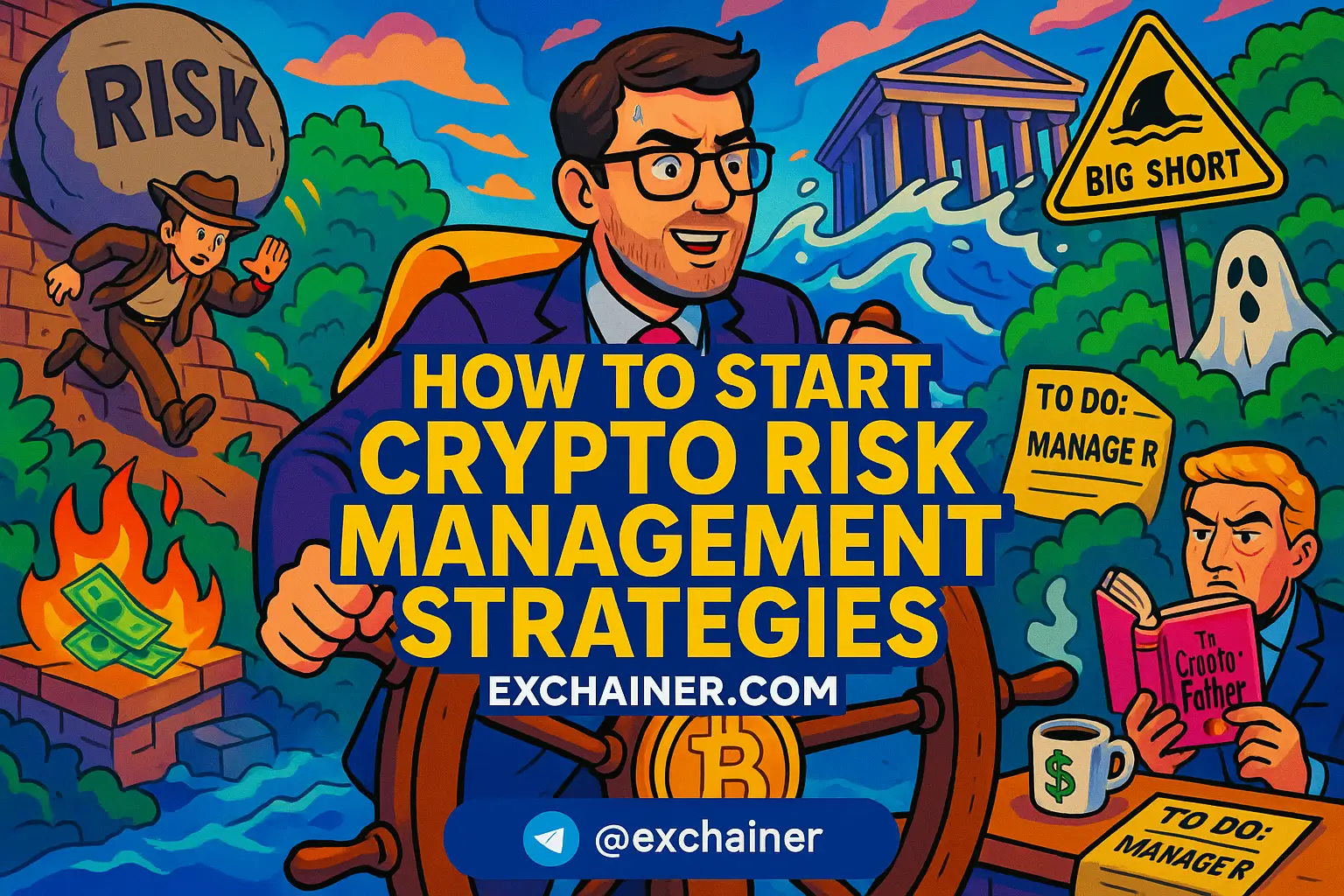The cryptocurrency market is filled with opportunities—and risks. With thousands of crypto projects emerging, identifying the ones with true potential is no easy task. Successful investors rely on a systematic approach to evaluate projects before committing funds. This process helps minimize risks, avoid scams, and find tokens with real long-term value.
In this guide, we’ll cover the key factors to consider when evaluating crypto projects, including team credibility, tokenomics, use cases, and community engagement. You’ll also learn how to spot red flags and use reliable tools to make data-driven decisions.
Whether you’re a beginner or an experienced investor, this article will equip you with the knowledge to assess crypto projects confidently.
For a deeper dive into crypto basics, visit our Crypto Basics section.
1. Core Factors to Evaluate Crypto Projects
When evaluating crypto projects, understanding the core factors that determine their potential is critical. By analyzing key elements such as the team behind the project, tokenomics, use cases, and community engagement, you can make more informed decisions and avoid common pitfalls. Here are the essential aspects to consider:
1.1 The Team Behind the Project
A transparent and experienced team is often the foundation of a successful cryptocurrency project. Researching the people responsible for developing the project can provide insights into its credibility, vision, and likelihood of long-term success.
Key Questions to Ask:
- Who are the founders and core developers?
- Do they have a proven track record in blockchain technology, finance, or related fields?
- Are their profiles available on platforms like LinkedIn or GitHub?
For example, Ethereum became a trusted project early on because of co-founder Vitalik Buterin’s strong reputation as a blockchain innovator. Projects with public, verifiable team members are typically more reliable, while anonymous teams should raise caution.
Red Flags:
- Teams that are entirely anonymous or lack professional profiles.
- A history of failed or controversial projects associated with the team members.
1.2 Tokenomics and Financial Model
The financial design of a project—commonly referred to as tokenomics—plays a significant role in determining its sustainability and value. Tokenomics covers supply, distribution, and the economic incentives built into the system.
Key Metrics to Evaluate:
- Supply: What is the circulating supply, and how does it compare to the total or max supply? Projects with capped supplies, like Bitcoin, create scarcity and long-term value.
- Distribution: Are tokens fairly distributed among the team, investors, and community? Beware of projects where a small group controls the majority of tokens, as this can lead to price manipulation.
- Utility: Does the token have a clear purpose, such as governance, payments, or access to services within the ecosystem?
Example:
Binance Coin (BNB) is an example of strong tokenomics, using token burns to reduce supply and increase demand. Its utility extends across the Binance ecosystem, from trading fee discounts to transaction fees on Binance Smart Chain.
1.3 Real-World Use Cases
A successful crypto project typically solves a real problem or provides tangible value. The token’s utility within the ecosystem is a critical factor for evaluating its potential.
Examples of Strong Use Cases:
- Ethereum (ETH): Powers smart contracts and decentralized applications, serving as the backbone of the DeFi ecosystem.
- Chainlink (LINK): Provides decentralized oracles that connect smart contracts to real-world data.
Red Flags:
- Projects that lack a clear use case or have vague promises of future value.
- Tokens whose only purpose is speculative trading without underlying utility.
1.4 Community and Adoption
A strong, engaged community often signals a project’s growth potential. Active developers, transparent communication, and a loyal user base contribute to long-term adoption and success.
Key Metrics to Monitor:
- Social Media Engagement: Check activity on platforms like Twitter, Telegram, and Reddit.
- Partnerships: Look for collaborations with reputable organizations to validate the project’s credibility.
- Development Activity: GitHub repositories and frequent updates indicate active development.
Example:
Polkadot (DOT) has built a vibrant developer ecosystem, with multiple parachains and projects being actively developed on its platform.
2. Tools for Evaluating Crypto Projects
Evaluating crypto projects effectively requires reliable tools and resources that provide data-driven insights and a deeper understanding of a project’s ecosystem. From platforms that aggregate project information to advanced analytics tools, these resources are essential for making informed investment decisions. In this section, we’ll explore the most useful tools and strategies to evaluate crypto projects.
2.1 Research Platforms
The first step in analyzing a crypto project is to gather accurate and up-to-date information. Several platforms provide comprehensive data on cryptocurrency performance, project details, and market trends.
Recommended Platforms:
- CoinGecko: Offers a wealth of data, including market cap, trading volume, price history, and community engagement metrics. CoinGecko also features trust scores for exchanges and liquidity pools, helping users identify reliable platforms.
- Messari: A go-to resource for institutional-grade research reports, token metrics, and in-depth project analysis. Messari’s free and premium tools make it easy to compare projects on various parameters.
- DeFi Llama: Tracks Total Value Locked (TVL) in decentralized finance protocols, providing insights into a project’s adoption and performance within the DeFi ecosystem.
2.2 Smart Contract and Code Analysis
Technical security is a cornerstone of any trustworthy crypto project. Audited smart contracts and open-source code can demonstrate a project’s commitment to safety and transparency.
Key Steps:
- Check if the project has undergone security audits by reputable firms like Certik or SlowMist. Audits evaluate vulnerabilities in the smart contract code and verify that funds are protected against exploits.
- Review the project’s GitHub repository. Regular updates, active commits, and clear documentation are signs of a healthy development process. A stagnant GitHub may indicate a lack of progress.
Example:
The Uniswap protocol, a leading decentralized exchange, has its code openly available on GitHub and has undergone multiple audits, ensuring a higher level of trust among users.
2.3 Sentiment and Social Listening
A project’s reputation and community sentiment often indicate its potential for growth and adoption. Social listening tools can help you track conversations and gauge public opinion.
How to Use Social Listening for Crypto Evaluation:
- Social Media Engagement: Monitor platforms like Twitter, Reddit, and Telegram for discussions about the project. High engagement and positive sentiment suggest a strong community.
- Sentiment Analysis Tools: Use tools like LunarCrush to track social metrics, including mentions, engagement, and sentiment trends for specific tokens.
- News Alerts: Set up Google Alerts for the project’s name to stay updated on announcements, partnerships, or controversies.
Example:
Polkadot’s vibrant community on Telegram and Reddit has been instrumental in fostering trust and engagement, contributing to its widespread adoption.
2.4 Project Comparison and Metrics Analysis
Comparing crypto projects can help you identify the best opportunities. Tools designed for comparative analysis allow you to evaluate multiple projects based on predefined criteria, such as tokenomics, adoption, and security.
Best Tools for Comparison:
- CryptoCompare: Enables side-by-side comparisons of tokens, including key metrics like ROI, trading volume, and market cap.
- DefiPulse: Focuses on DeFi projects, ranking protocols by TVL and providing insights into their risk profiles and growth trends.
- Token Terminal: An advanced analytics tool for comparing project revenue, price-to-earnings ratios, and user adoption statistics.
2.5 Tracking Real-World Adoption
While technical metrics are important, tracking real-world adoption and partnerships can help determine whether a project has long-term viability.
What to Look For:
- Enterprise Use Cases: Are major companies using the project’s technology? For example, Chainlink is widely used for its oracle services across industries.
- Ecosystem Growth: Projects like Ethereum and Binance Smart Chain have robust ecosystems with thousands of developers building applications, indicating strong adoption.
- Partnerships: Verify partnerships directly from official announcements or press releases. Be wary of exaggerated or fake claims.
2.6 On-Chain Data Analytics
On-chain analytics provide a unique perspective on the health and activity of a crypto project. These tools analyze blockchain data to uncover trends that may not be apparent from market prices alone.
Recommended Tools:
- Glassnode: Offers insights into on-chain metrics, such as active addresses, transaction volumes, and exchange flows.
- Nansen: Tracks wallet activities, helping users identify whales, smart money movements, and token distribution trends.
- Dune Analytics: Allows users to create custom queries and visualizations for blockchain data, offering deep insights into specific projects.
Example:
Using Glassnode, investors can monitor Bitcoin exchange outflows to gauge whether holders are moving their assets to cold storage, a sign of long-term confidence.
Why Tools Matter in Crypto Evaluation
Without the right tools, evaluating crypto projects becomes a guessing game. Platforms like CoinGecko, Nansen, and CertiK offer actionable insights that empower investors to make informed decisions based on data, not hype. By leveraging these resources, you can evaluate projects more effectively and reduce the risks of investing in unreliable or fraudulent tokens.
For an in-depth guide on crypto investing strategies, visit CoinDesk’s Investment Guide.
3. Red Flags to Watch Out For in Crypto Projects
Investing in cryptocurrency can be highly rewarding, but it’s not without its risks. Many projects fail or turn out to be scams, costing investors significant amounts of money. By recognizing red flags early, you can protect your assets and avoid falling victim to bad actors. In this section, we’ll explore the most common warning signs in crypto projects and how to identify them.
3.1 Unrealistic Promises and Guarantees
One of the most obvious red flags in a crypto project is the promise of guaranteed returns or impossibly high profits in a short period. While some projects might experience rapid growth, no legitimate investment can offer guaranteed results.
What to Look For:
- Promises of fixed returns, such as “Get 10% daily profit forever.”
- Claims of being “risk-free” investments.
- Overly polished marketing materials that focus more on hype than substance.
Real-World Example:
The BitConnect scandal remains one of the most infamous examples of unrealistic promises. The project guaranteed returns of up to 1% daily, luring in thousands of investors. BitConnect turned out to be a Ponzi scheme, collapsing in 2018 and causing billions in losses.
Prevention Tips:
- Avoid projects that emphasize returns over technology or real-world utility.
- Research the project’s whitepaper and roadmaps for realistic goals and timelines.
3.2 Anonymous Teams and Lack of Transparency
Transparency is critical in crypto projects. Legitimate projects are typically led by teams with verifiable identities, professional credentials, and active public engagement. Anonymous teams, on the other hand, often signal a lack of accountability.
What to Look For:
- No team information on the project’s website or whitepaper.
- Inactive or non-existent LinkedIn and GitHub profiles.
- Limited communication with the community via social media or forums.
Real-World Example:
In 2021, the “Squid Game” token was launched by an anonymous team. The project capitalized on the popularity of the Netflix series but had no official connection to it. The developers vanished after draining liquidity, leaving investors with worthless tokens.
Prevention Tips:
- Verify team members on LinkedIn, GitHub, and other professional platforms.
- Look for projects with regular updates and direct communication with their community.
3.3 Centralized Token Ownership
A poorly distributed token supply is a common issue in many projects. If a small group of individuals or wallets holds a significant percentage of the total token supply, it can lead to price manipulation, creating an unstable market.
What to Look For:
- Token distribution data available on platforms like Etherscan or BSCScan.
- High concentration of tokens in a few wallets, often labeled as “whales.”
Example:
The Ripple (XRP) project has faced criticism for its token distribution, with Ripple Labs holding a substantial portion of the total supply. This has led to concerns about centralization and market manipulation.
Prevention Tips:
- Check the token distribution data on blockchain explorers.
- Avoid projects where one or two wallets control the majority of tokens.
3.4 Over-Reliance on Hype
Projects that rely heavily on hype without delivering tangible progress are often unsustainable. While strong marketing can attract investors, it should never replace solid fundamentals and a clear roadmap.
What to Look For:
- Excessive focus on influencer endorsements without technical or developmental milestones.
- A vague or incomplete whitepaper that avoids discussing the technical aspects of the project.
Real-World Example:
Many meme coins, like SafeMoon, experienced massive price surges due to influencer endorsements and social media hype. However, the lack of clear utility or development has led to significant losses for late investors.
Prevention Tips:
- Look for projects with detailed roadmaps and measurable progress.
- Avoid projects where marketing outweighs technical development or use case discussions.
3.5 Lack of Audits or Code Reviews
A project’s smart contracts are the backbone of its functionality. If these contracts are not audited or reviewed by a reputable third party, there’s a higher risk of vulnerabilities, exploits, or even intentional backdoors.
What to Look For:
- Has the project undergone a security audit? Check for audits by firms like CertiK or SlowMist.
- Is the code open-source and accessible on platforms like GitHub?
Real-World Example:
The DeFi protocol Harvest Finance was hacked in 2020 due to vulnerabilities in its smart contracts, resulting in a $24 million loss. The lack of a thorough audit contributed to this exploit.
Prevention Tips:
- Always verify whether the project’s contracts have been audited.
- Check for transparent documentation regarding security measures.
Why Identifying Red Flags Matters
Spotting red flags in crypto projects is crucial for protecting your investments and ensuring you’re not contributing to unsustainable or fraudulent endeavors. Even well-marketed projects can hide critical vulnerabilities, making due diligence essential for any investor.
By using tools like blockchain explorers, audit platforms, and sentiment trackers, you can uncover potential risks before committing funds. For an in-depth guide on identifying scams in crypto, visit CoinDesk’s Security Section.
Team Opinion on Evaluating Crypto Projects
Evaluating crypto projects before investing is essential for mitigating risks and maximizing potential returns. By analyzing the team, tokenomics, use cases, and community engagement, you can identify high-quality projects with long-term viability.
Our team emphasizes the importance of thorough research and skepticism. Projects with transparent teams, audited smart contracts, and clear roadmaps are often more reliable than those driven by hype. Tools like CoinGecko and Messari can assist in making data-driven decisions.
Always remember: Invest only what you can afford to lose, and avoid following trends without due diligence.











